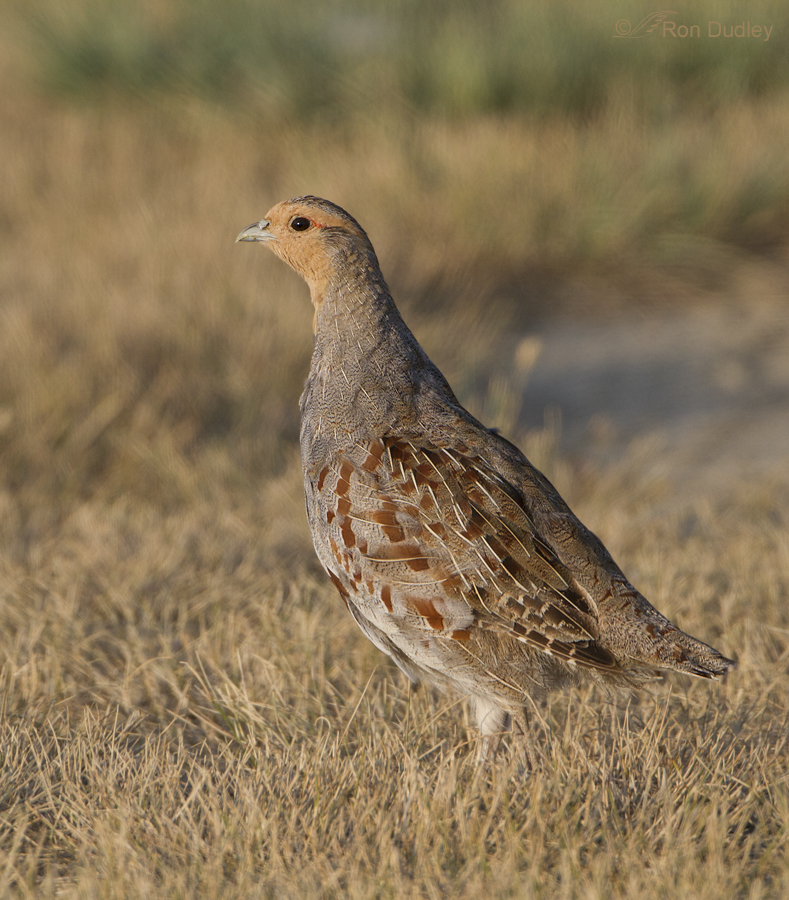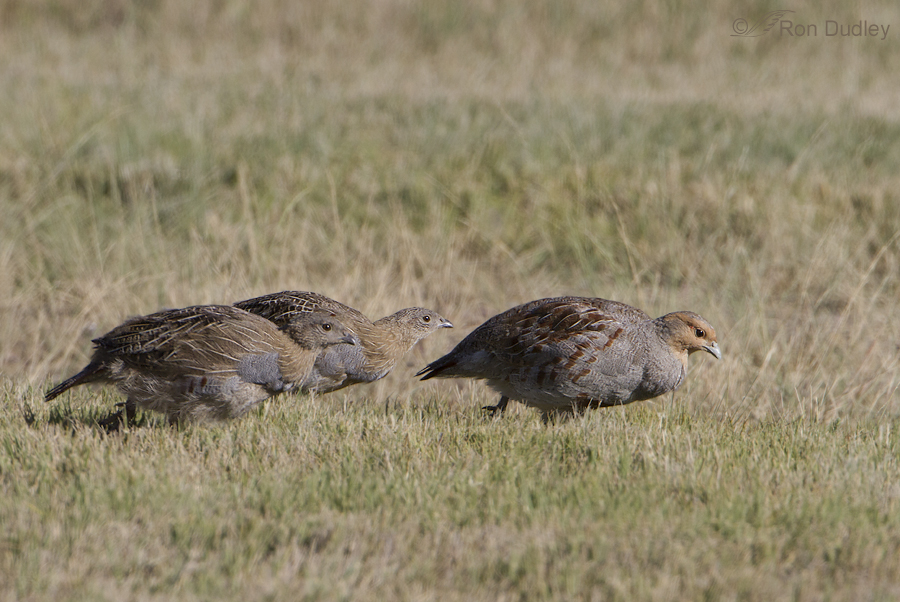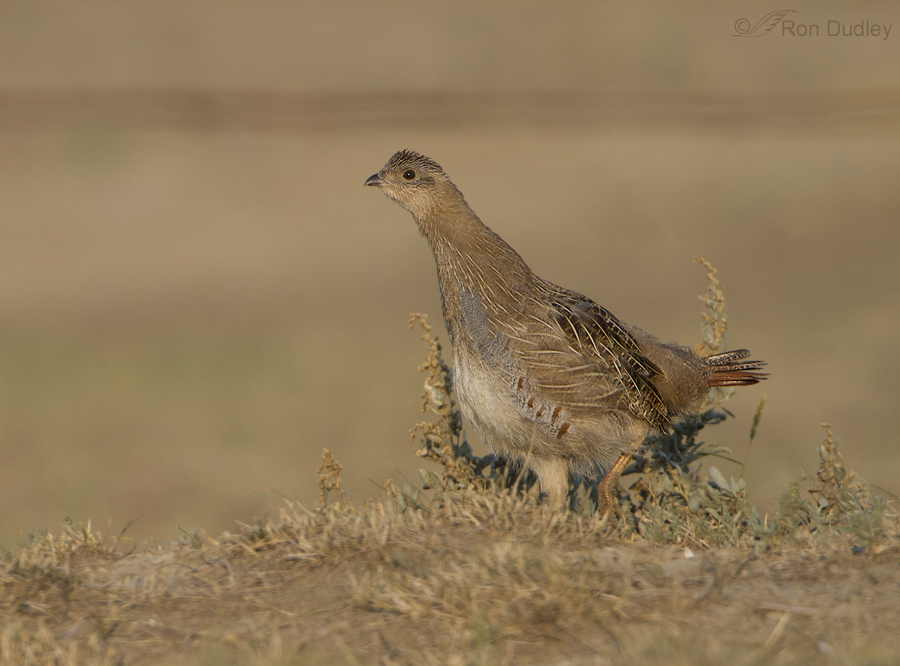The Gray Partridge has a fairly limited range in North America and most folks don’t get to see them so I thought some might be interested in a post on the species. This bird prefers the grasslands and grainfields of our northern wheat-belt so they’re fairly common on the family farm in northwest Montana.
Gray Partridges are often called Hungarian Partridges, or “Huns” for short.
1/1600, f/6.3, ISO 500, 500 f/4, 1.4 tc, natural light
There’s very little sexual dimorphism in these partridges so the sexes are difficult to distinguish. This is an adult – the cinnamon bars on the flanks are a good field mark for the species.
1/1600, f/6.3, ISO 500, 500 f/4, 1.4 tc, natural light
These birds are wary and fast so they’re a challenge to photograph. They always seem to be buried in vegetation or running…
1/800, f/11, ISO 500, 500 f/4, 1.4 tc, natural light
or foraging in small groups with their heads down. The bird on the right is an adult with two juveniles behind.
1/1600, f/6.3, ISO 500, 500 f/4, 1.4 tc, natural light
Here you can see the orange-rufous outer tail feathers of this juvenile. The cinnamon bars on the flanks are just beginning to show. The darker brown line in the upper background is a rusty old strand of barbed wire.
The range of this species includes extreme northwestern Utah and I’ve seen a few of them in Box Elder County but never been able to get any decent shots of our Utah birds. Hopefully that will change one day soon.
Ron






I have seen some in the river valley and at the legislative grounds here in Edmonton,Alberta.
I think if I was hunted as often as partridges I too would be wary and move fast. It is a stunning bird though – with photos to match. Thank you.
Nice photos of a bird I’m lucky enough to see quite often in my backyard. A couple of winters ago they were burrowing through the snow on my lawn to find stuff to eat. In the fall they form large coveys (groups) of up to a dozen or more adults. I think there were 11 in the covey I had that winter. In autumn I often have them foraging with their young for insects and seeds. Very fun to watch. When I go hiking around my house they often flush and give me a start!
Beautiful shots Ron!! I love how you capture the exact DOF, oh so sharp!!
I believe the males can be told from the females by a large dark chestnut spot on the belly whereas the spot on the females are either much smaller or absent. Plus the rust on the face of the male continues from the throat up and in back of the eye with a dark or black line extending from the eye back over the rust.
We were fortunate in seeing these fellows when we were in Montana, and happened to see both sexes and immatures.
Thanks very much, Dick – that’s good to know. I’d read about the better developed dark brown patch on the belly of the males but didn’t know about the rust on the males face or the dark line by the eye.
Great photos! Is the line in the background above the head of the Gray Partridge in the last picture a road?
Thanks, Sam. No, it’s not a road. I mentioned in my text that it’s a rusty strand of barbed wire.
Ron -Thanks for the beautiful photos of these stunning birds! Maybe someday I will cross paths with them!
Thank you, Nancy. I’d like to “cross paths” with them again sometime soon also. It’s been a while…